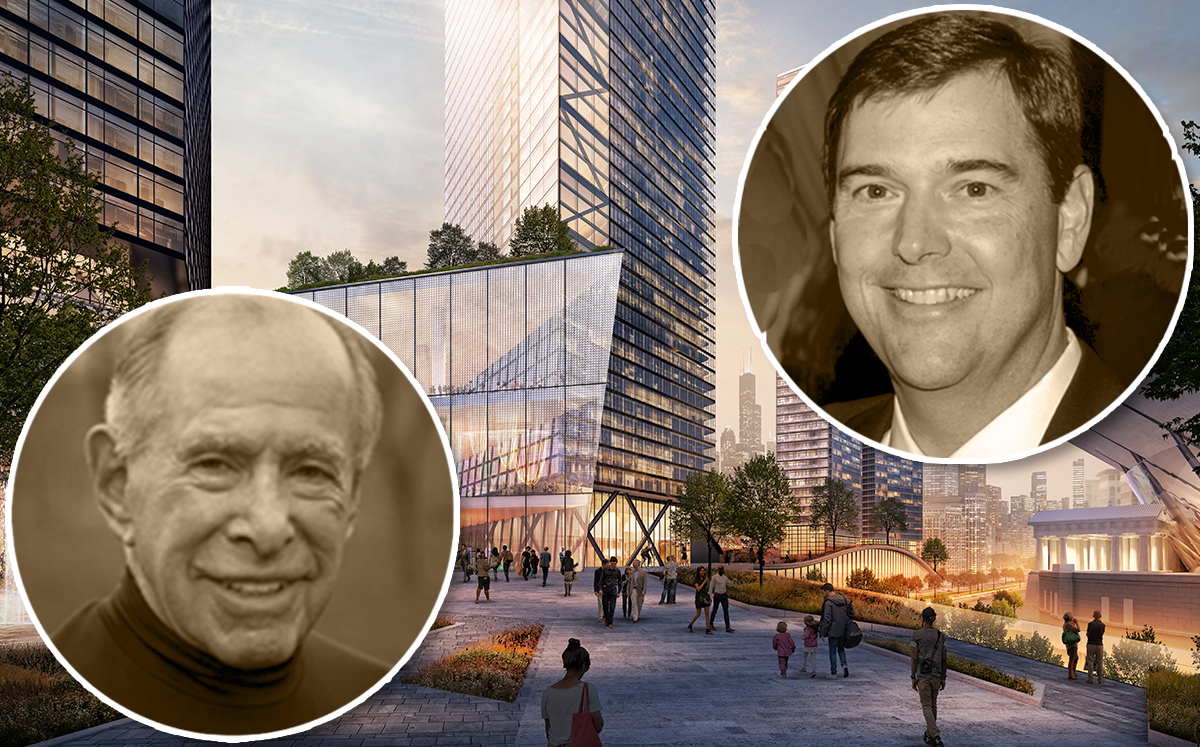Trending
Landmark’s proposed South Loop megaproject would bring high-rises, major transit hub near Soldier Field
The new “One Central” development would build residences, offices and more over the Metra tracks west of Soldier Field

Landmark Development’s proposed new mega-project in the South Loop would rise over a massive rail yard that its planners say will be a key part of the development, not just an afterthought to the buildings above.
The firm is planning to build the “One Central” project over a 34-acre stretch of rail lines and a Metra rail yard near 18th Street and Lake Shore Drive, a development it has named One Central. It would include millions of square feet of residential, office and commercial space in high-rises built on a platform over the tracks.
Landmark’s Bob Dunn said the rail infrastructure is what has stifled development of the site in the 30 years since Dunn’s partner, Gerald Fogelson, bought the air rights over the tracks. But the problem also allows for a unique opportunity to incorporate a transit hub that would rival some of the biggest and most modern in the world, Dunn said.
“We viewed it at first to be an impediment to the site,” Dunn said Wednesday. “We realized it’s really what defines the opportunity here.”
The project was being unveiled at a community meeting Wednesday night. Though concrete details of the development were not released, renderings call for about a dozen high-rises holding residences, offices and hotels. A number of low-rise buildings could hold “hundreds of thousands” of square feet of retail, including possible experiential retail and entertainment districts.
Renderings show green space throughout the development, including north-south trails connecting the development and a pedestrian bridge over Lake Shore Drive to Soldier Field and the Museum Campus.
Together, the renderings represent millions of square foot of development and an expansion of the skyline south, while connecting the South Loop to the McCormick Place district and the lakefront. The renderings were only ideas of what the project could look like, said Dunn, who added topics like density, building height, square footage and number of units will be announced after input from the community.
Dunn has said the development will move beyond the traditional idea of “mixed-use,” and could include schools, medical facilities and civic space.
The project would require building a platform 50 feet above ground and re-aligning existing Metra Electric Line and South Shore Line tracks below.
Newly-formed Landmark Development, a venture of Dunn and Fogelson, envisions a reworking of the two lines plus a spur off the CTA Orange Line and the reworked Metra BNSF line to connect them to the site. Amtrak’s eastbound trains travel right past the site and could be become part of the transit hub, Dunn said.
Plans also include a new express public transportation route that connects the development to the museum campus, Navy Pier and Downtown, Dunn said. It would use existing CTA “bus way” routes built under the lakefront park, he said.
The combined plan would place local, regional and national rail travel in one hub.
“We really haven’t done this in the U.S.” Dunn said. “Rarely have we found opportunities to connect this infrastructure. This would be on par with the major transportation hubs that have been built worldwide.”
Landmark unveiled the One Central plans on the same day Sterling Bay won City Council approval for its Lincoln Yards project. The bruising approval processes for Lincoln Yards and, to a lesser extent, Related Midwest’s The 78 just a few blocks away in the South Loop, have informed Landmark’s plans, Dunn said.
“We’ve learned a lot watching the evolution of other projects,” he said. “You hope to gain some insight as they go through that process, and I think we have.”
Landmark probably could learn a few lessons from Related’s New York cohorts, who built the sprawling Hudson Yards development over a giant rail yard as well.
Alderman Pat Dowell (3rd), who hosted the meeting Wednesday night, said she has not yet given the project her support, but said the site represents a unique opportunity for the city.
“There’s so much potential for this site,” she said. This is just “the initial step of what will be a long process.”
Unlike Related and Sterling Bay, Landmark won’t ask for tax increment financing for the project, Dunn said. Used as a way to pay for infrastructure improvements by diverting property tax revenue, TIFs near The 78 and Lincoln Yards have been heavily criticized.
Instead, Dunn said Landmark will use mostly private funds to pay for infrastructure work at One Central.
“We didn’t see TIF as a vehicle to support some of the infrastructure build,” Dunn said. “We’re finalizing a finance plan for the project that builds off other things we’ve been able to do with projects like this.”
Dunn has led a number of other high-profile projects around the country, including the new Lambeau Field in Green Bay, Ford Field in Detroit and U.S. Bank Stadium in Minnesota.
Landmark is proposing the massive project at a time of uncertainty in city politics, with a new City Council and a likely less-development friendly mayor about to take office.
Dunn said the civic benefit to his project — and the refusal of TIF dollars — make it an easy sell.
“Whoever the next mayor is, it’s my hope and my belief that the merits of this project will carry us forward,” he said.




